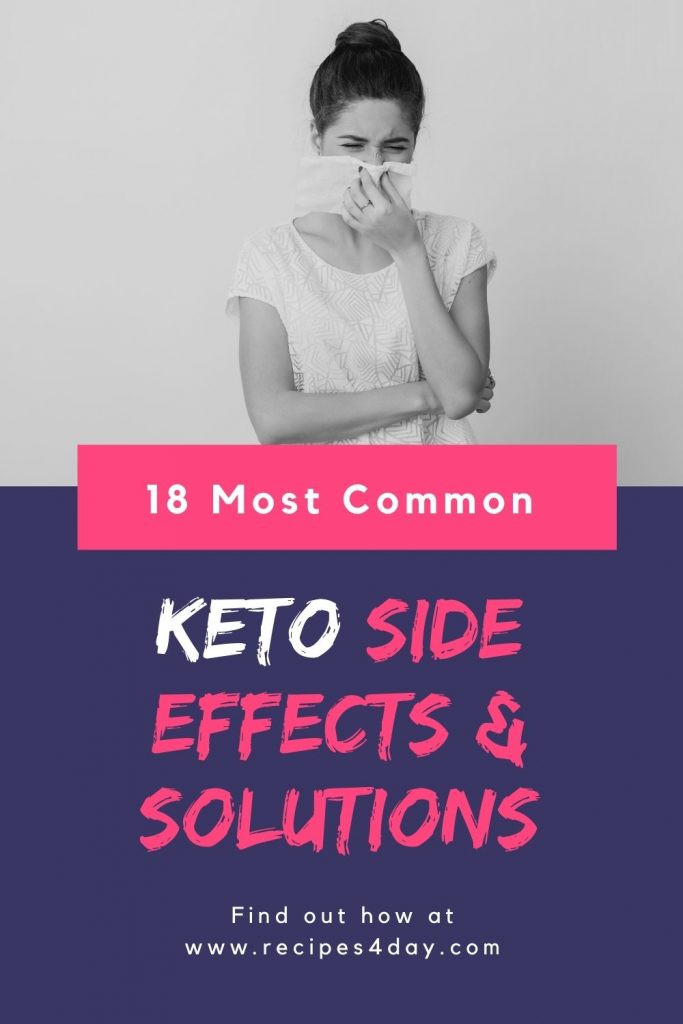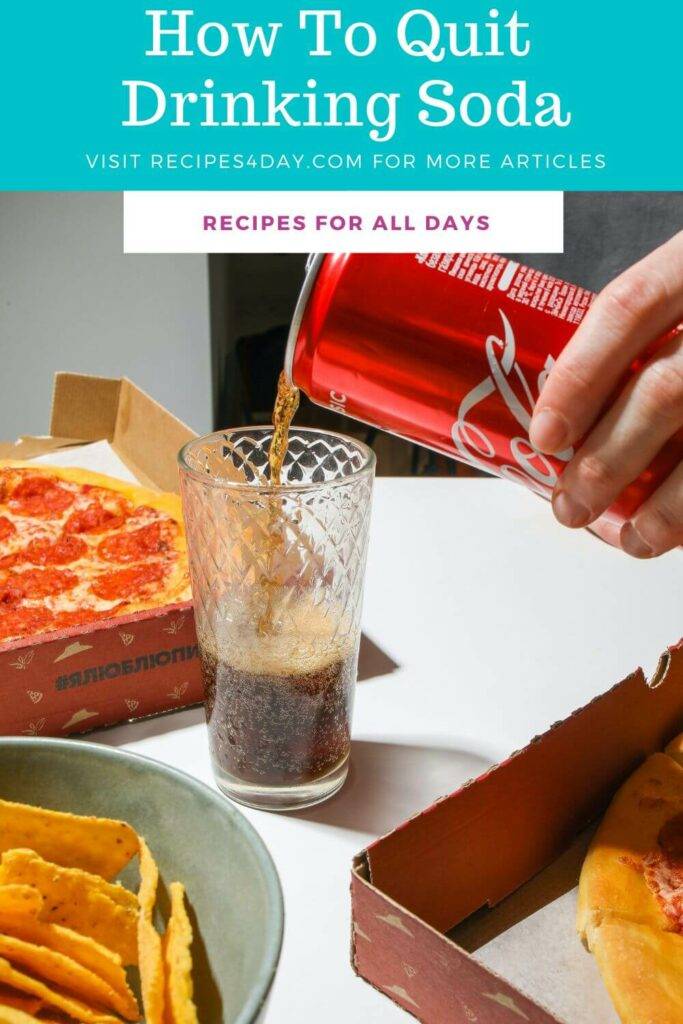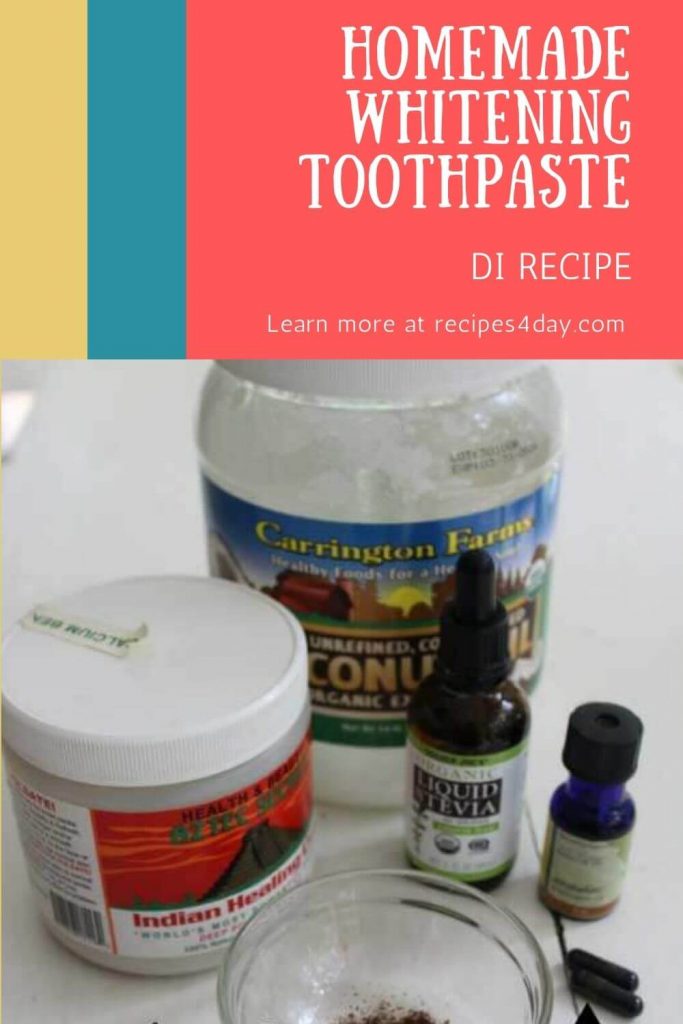We all start the ketogenic diet for different reasons. There are so many great health benefits associated with it. For you, maybe that reason is to shed some weight? Maybe it is to achieve better insulin sensitivity? Perhaps you have a need for better mental clarity? Many of us are able to adapt to the diet in a few weeks and reap these benefits from that point forward. But hey, let’s be honest with ourselves, keto isn’t exactly easy to just jump into.
Quite frankly, it really sucks in the beginning. You’re basically flipping your macros upside down and your body is trying to figure out what to do. With that, your nutrient/vitamin intake completely changes because you are eating all new foods. There are many variables at play here and keto side effects can happen.
Personally, I’ve dealt with a number of keto side effects over the past few years. I’ve struggled with brain fog, anxiety, hypoglycemia, and digestive problems. Once I realized that many of these issues were related to the same root problem, I was able to get past them and really enjoy keto. In this article, I’ve compiled as many keto side effects together as I could. After reading this, you should be better equipped to deal with keto side effects when they happen for you.
Let’s get started. I want you to be able to enjoy this diet!
1.Hypoglycemia
Let’s start with hypoglycemia because I believe that this has been related to many of the problems I’ve had on this diet – especially when I was just starting out. There are many symptoms associated with it.
Hypoglycemia is a very common side affect of cutting out carbs. Your body is craving that sugar that it is no longer getting. If you have a family history of diabetes or insulin resistance the chances of running into problems while burning fat initially will be greater. [*][*][*]
Some of the symptoms of hypoglycemia include:
- Feeling of Hunger
- Sweating
- Shakiness, Anxiety, Nervousness
- Moodiness, Depression
- Fatigue, Weakness
- Clumsiness
- Trouble Speaking
- Confusion, Light Headedness, Dizziness
- Loss of Consciousness
- Seizures
- Palpitations, Tachycardia
If you are sticking to the diet, the symptoms of hypoglycemia will go away as you fat adapt. You need to get the majority of your calories from fat. And, the key is to make sure that you are getting the right percentage of your calories from fat.
If your fat intake stays below 60% for total calories, you are likely to keep seeing these symptoms. Studies have shown that going below 60% fat intake will maintain a baseline insulin resistance. But, increasing your fat intake to go above 60% will improve the condition. As insulin resistance decreases, you should also see a decrease in inflammation. [*][*] [1]
One Reddit user reported that the symptoms of the keto flu were very similar to hypoglycemic reactions. But, given about 36 hours for the body to adjust, the symptoms then went away. She also added that the symptoms later returned if she went off of the ketogenic diet. [*]
Solutions to Hypoglycemia
Consume above 60% of your total calories from fat
Allow time for keto adaptation to complete
Make sure these symptoms have completely vanished before you cheat on the diet
2.Headaches
One of the great things about the ketogenic diet also happens to be a double edged sword. I am referring to the water loss and electrolyte loss that happens when starting the diet. The body is actually more efficiently able to manage fluids. But, anytime we lose fluid we also lose important electrolytes like sodium and potassium. In the end, this can result in a person getting a headache.
Dr. Atkins actually used the ketogenic diet to treat headaches. The good news is that headaches are pretty easy to get rid of once you know what to do.
Other symptoms that can appear alongside a headache:
- Fatigue, Weakness
- Lightheadedness
- Malaise
- Constipation
High carbohydrate diets make the body retain salt. Low carb diets make the kidneys excrete sodium faster. The body’s metabolism of sodium is much different on a ketogenic diet. Both water and sodium are more efficiently excreted. This process is called the “natriuresis of fasting”. It happens not only when we fast but also when we do keto. [2]
When you combine water loss with sodium loss, the result is a negative effect on your blood circulation. [3]
Many of the studies centered around physical performance on keto have provided athletes with a total of 5g of sodium per day. To put that in perspective, that is more than twice the recommended intake of 2.3g by the FDA! Researchers did this because they knew that the athletes would have keto side effects if sodium was low.[*]
Along with increased salt intake, ensure that you are consuming enough fluids. On days that you exercise, try drinking a cup of bone broth, chicken broth, or bouillon before your work out. This will help you get the energy you need to build into a more intense workout. It’s also going to offset the extra salt loss when you sweat. [3]
Cultures of the Past
Inuit hunting cultures of the past ate high-fat diets. They knew the importance of sodium intake in relieving the symptoms of a headache. They would specifically pick out sea ice that had aged by a certain amount, then boil it with their meat. They also consumed the blood of the animals they killed. Animal blood is actually pretty high in sodium. [2]
Solutions to Headaches
- Treat Hypoglycemia which can also be a cause.
- Increase your salt intake.
3.Mood Swings
This one is interesting because there isn’t one single solution to the problem. Our brains are complicated. But, even so, this should be easy to address once you have a handle on where the problem is coming from. It may be related to a nutrient deficiency or your body could be going through hypoglycemia.
For me, my mood has definitely improved while on keto. I’m more level than I used to be when I was consuming a standard American diet. There are still days when I do feel off. I’ll take a step back and make a few small adjustments to my diet as needed.
When it comes to keto and adaptation, your body needs to go through a number of changes in your digestive system. It could be that you have never fully completed metabolic adaptation. You need the enzymes to be able to break down fat. That takes time and is a part of your metabolic adaption process. Metabolic adaption takes up to six weeks.
Protein
Protein is important! The ketogenic diet is a high fat and moderate protein diet. But, this does not mean that you should be severely cutting back on your protein. Here is why…
There are four main emotional neurotransmitters in your brain. They are serotonin, GABA, endorphin, and the catecholamines (which contain dopamine and epinephrine). The buildings blocks for each of these neurotransmitters can be found within the amino acids of protein. [4]
If your supply of amino acids is low, your mood can suffer. Personally, grass-fed beef has been my “go to” protein source while doing keto. It has really helped to boost my mood.
To get more Amino Acids in your diet, consume more:
- Beef
- Salmon
- Chicken
- Eggs
- Cheese
Keep in mind, eating too much protein is going to kick you out of ketosis. It is important to find a good balance here for your body. In general, you shouldn’t need more than .8g per pound of body weight. So, make your protein source count!
Carbs from Vegetables
Carbs actually aid with shuttling tryptophan into the brain. Tryptophan is a precursor to serotonin, a key mood-boosting neurotransmitter. Since we are drastically cutting carbs out on keto, we do need to make sure we are getting a healthy amount from vegetables.
In addition to better tryptophan usage, you’ll also be getting more of the important mood-boosting vitamins in your body. You can get most of these vitamins below in green leafy vegetables.
Important Mood Boosting Vitamins
- B Vitamins
- Vitamin C
- Vitamin D
- Electrolytes
- Sodium
- Magnesium
- Potassium
- Calcium
Solutions to Mood Swings
If you also have hypoglycemic symptoms, address this first.
- Ensure a complete protein source for amino acids.
- Add green leafy vegetables to your diet for the vitamins and carbohydrates.
4.Brain Fog
I have to admit, this was something I struggled with for a good month when I started keto. Brain fog can be hard to explain but for me it was always a feeling of mental slowness.
I was slower to think of words in conversation, slower to solve problems, and just mentally unclear in general. I would have the most trouble in the morning while also intermittent fasting. I fixed it by doing a few different things. For me, it wasn’t a hard problem to solve.
Usually, it is an adaptation issue or low sodium issue. [*] I believe it was a combination of the two in my case.
Speed up Your Brain’s Fat Adaptation
It takes time for the brain to build up its metabolic pathways for ketone consumption. The more circulating ketones you have in your blood, the more machinery your brain builds to use those ketones.
Step 1 – Increase your ketone levels.
MCT (AC–1202) oil can be supplemented to increase the levels of ketones in the body more quickly. MCT is rapidly metabolized in the liver for quick ketone production. It has also been shown to help patients with Alzheimer’s. That applies to those with mild impairment in memory recollection testing as well.[*]
You could also use exogenous ketones to increase ketone levels quickly.
Step 2 – Keep your ketone levels elevated
MCT–1 is a transporter in the brain that shuttles ketones into the mitochondria of cells. This is NOT the same thing as MCT oil. As carbohydrate restriction takes place, MCT–1 levels increase to assist with ketone oxidation. Elevated levels of blood ketones will drive this change.[*][*]
Step 3 – Your Brain Wins
Once your brain has been given the time to adjust to ketones, your brain fog will be left in the dust. Be patient through adaptation and avoid cheating on the diet until after your symptoms have vanished. For me, that took over a month but now I feel better than ever.
Sodium
Yep, here I go again with the sodium! It goes to show how important this electrolyte is while doing keto. If you are feeling mental fatigue, try adding more sodium to your diet. [*]
Solutions to Brain Fog
- Use MCT oil and exogenous ketones to help speed up adaptation
- Increase sodium intake
5.Constipation
This is a fairly common side effect on the ketogenic diet. Constipation normally accompanies other side effects related to fluid and electrolyte loss. That isn’t always the case though.
Dehydration
When it comes to constipation, the first thing to look at is dehydration. We know that there is a big connection with keto and water loss. Make sure you are drinking enough water and replenishing those fluids.
Even if you have been on the diet for several months, your body is going to maintain a lower baseline water weight. This happens because you have depleted glycogen stores. [*]
Some people have had success with taking Magnesium Citrate tablets. This helps by relaxing your bowels and moving fluids into the small intestine. [*][*]
Vegetable Fiber (Both Good and Bad)
Fiber intake is important as well. This is the food that supports your gut bacteria and a healthy digestive system. If you have switched to keto and are not eating green leafy veggies, you are likely not getting the fiber you need. Increase fiber intake by eating leafy green vegetables.
Great Sources of Vegetable Fiber:
- Asparagus
- Broccoli
- Kale
- Spinach
Keep in mind, some people do have issues digesting cruciferous vegetables. If you are already consuming a good amount of these veggies and are having digestive issues, then there are two things you can do.
If you already eat a good amount of veggies:
- Try consuming your food with apple cider vinegar. This will increase your stomach acidity and as well as the amount of good bacteria.
- If you are now consuming more vegetables than you did before, try cutting them back and slowly introduce them into your diet. Some of us simply can’t digest broccoli well for example. As you build veggies back into your diet, your stomach will produce the necessary enzymes for digestion.
Coffee
I’ve always been a huge coffee drinker. In fact, I’m sipping on a hot cup as I write this. So, I’m a little biased, but I do feel that coffee is a great compliment to keto for several reasons.
- It works especially well if you are intermittent fasting because of its appetite suppressant effects.
- Coffee is one of the most simple laxatives out there. If I drink two cups in the morning, rest assured, I am in the restroom soon after.
A 2017 study found that the more coffee you drink, the lower your risk of colon cancer overall. If you drink 2.5 cups or more per day, you are half as likely to develop CRC. [*]. That’s crazy! So, if you don’t drink coffee, it may be time to give it a shot.
Solutions to Constipation
- Increase fluid intake
- Add a bit of salt to your diet
- Magnesium Citrate tablets
- Increase Fiber Intake from Vegetables
- If vegetable intake is already high, try reducing green cruciferous types temporarily
- Try drinking Coffee
6.Diarrhea
This keto side effect can also be related to fluid and electrolyte loss. But, it can also be caused by a lack of digestive enzymes and certain food sensitivities.
Fluids and Electrolytes
As I’ve touched on with other keto side effects above, maintaining fluids are especially important. There are a slew of problems that can follow if this isn’t kept in check. With fluid loss comes electrolyte loss.
Try adding some bone broth or chicken broth into your diet. These are very easy for your stomach to digest and will give you a nice boost in sodium.
Digestive Enzymes
I’ve run into issues with this myself – especially with coconut oil and MCT oil. If you load up your keto coffee with either one of these in the morning, your stomach may not be ready for it. Coconut oil does have some laxative like properties to it. [*]
My body was simply not accustomed to breaking down this fat. Digestive enzymes are needed to properly digest certain fats. Our bodies will build those up over time. This is especially noticeable when you consume coconut oil or MCT oil on an empty stomach. Try consuming it with food at first if you run into problems.
Ox Bile supplements can be great for fat digestion. This is especially true if you are doing keto without a gallbladder. [*]
Food Sensitivities
It’s possible that your diarrhea is caused by a food sensitivity such as lactose intolerance. Take a minute to stop and think about what foods you have introduced since starting keto. And, what foods have you increased[*]
Consider cutting back or eliminating these foods one at a time:
- Dairy
- Eggs
- Nuts
- Meat
Solutions to Diarrhea
- Increase fluids and electrolytes
- Don’t consume MCT or coconut oil on an empty stomach
- Add Ox Bile to help with digestion
- Remove food sensitivities from diet
7.Frequent Urination and Water Loss
This keto side effect isn’t necessarily a bad thing. But, it is important to understand what is going on here with your body. During the first few weeks on the ketogenic diet, you are going to be flushing fluids as you deplete sugar (glycogen) stores. After that, your body will be maintaining a lower total quantity of water.
Natriuresis of Fasting
The process of losing water is called the “Natriuresis of Fasting”. As long as you are fasting or you are in ketosis, your body is going to be doing this.
The scale is not going to provide accurate results during this time. It has no way of differentiating your total fat loss vs water loss.
Generally, the body likes to have between 41 and 43 liters of water at any given time. At above 43 liters, the kidneys begin to flush out fluids. And, at around 41 liters, we start to feel thirsty. This means that there is a variability in water weight per person of about 4 pounds. But, with keto, we often lose more than that.
During the ketogenic diet, your glycogen stores deplete. When you lose that glycogen, you also lose the water associated with it. Your body stores 3–4 grams of water for each gram of glycogen. A typical 80kg male has about 500g of glycogen total. [3] That would equate to about 3.3 lbs of water loss.
Water Loss Over Time Study
A 2012 study (above) outlined body composition changes in a ketogenic diet over 70–80 days. Total Water loss at the end of the study was at about 8.5 lbs. Water weight is in blue and the x-axis corresponds to each of the seven measurement periods of 10 days each. [*]
Solutions to Frequent Urination and Water Loss
- Drink more fluids
- Replenish electrolytes with green leafy vegetables
- If you are feeling light-headed, dizzy, or confused, add sodium to your diet
8.Fatigue and Weakness
A feeling of fatigue and weakness can really be hard to manage. This is especially true for those of us who are more active. I had a tough time with this myself initially but my energy levels have stabilized since then. They’ve have even been boosted to higher than they were before. There are a few reasons why you could be experiencing fatigue and weakness.
I would also recommend checking out the section on water loss & frequent urination because these are related.
Sodium and Fluid Loss
Water and sodium loss that happens during keto adaptation can compromise your circulatory system. Are you also light headed when you stand up or experiencing brain fog? The fix is, like many of the other keto side effects, to add more sodium to your regimen and drink more fluids. [3]
Consider drinking 1–2 cups of bouillon prior to an intense workout for an extra sodium boost. If you were deficient in sodium, you should see your energy levels increase.
Salt is important for our muscles as well. A bit of added salt will help preserve your muscle tissue and increase physical performance. There have been a number of studies that have focused on athletic performance. Those researchers have supplemented participants with sodium to get a total of 5 grams daily. That includes both food and supplement sources of sodium. [*]
Vitamins
Along with sodium, potassium, and magnesium are also extremely important electrolytes. Increase your vegetable intake to get more of these important nutrients.
Are You Eating Enough Calories?
It is common to feel a sense of fatigue and weakness if you aren’t getting enough calories. Your goal may be to lose weight and the ketogenic diet does absolutely help with that. But, if you put yourself in a big calorie deficit, your body may slow its metabolism to conserve energy stores.
You may also be in a state of constant stress. Low calorie diets have been proven to increase cortisol release. Over time, this may lead to adrenal fatigue. This results in you feeling more tired. [*]
Consider adding a bit more fat to your diet if you feel you have a big calorie deficit.
Fat Adaptation
This can also be an issue of adaptation. Your body needs to build up the metabolic machinery to be able to process ketones. Remember – you have to be making ketones first before your body will adapt to using them.
Solutions to Fatigue and Weakness
- Increase Fluid Intake
- Increase Electrolyte Intake – Sodium, Magnesium, Potassium
- Increase Calories From Fat
- Allow for Metabolic Adaptation to Complete.
9.Muscle Loss
For most people, this shouldn’t be much of a concern. The time to be worried about muscle loss would be during your adaptation phase. The reason for this is that your body prefers burning sugar in the beginning. As sugar is depleted, it may try and get that sugar from your muscles initially.
Make Your Protein Source Count
The good thing is that your body’s preference for sugar is only temporary. As long as you have a good source of protein in your diet, then muscle tissue will be spared. Your body will start favoring fat more and more frequently as your adaptation progresses.
Protein intake is important and will prevent your body from breaking down muscles. Multiple studies have determined something important. Providing participants with more than the bare minimum amount of protein preserves lean muscle mass. [*]
Dr. Stephen Phinney did a study in 1983 with elite cyclists. He found that the athletes actually gained muscle when given enough protein. [*]
Along with protein intake, sodium intake is also key. If you aren’t getting enough sodium, the body will dump stores of potassium to preserve sodium. This could result in muscle loss even when there is adequate protein in the diet. [5]
Resistance Training is Important
Combine resistance training with Keto. A 2009 study found that obese participants who added resistance training to keto, did not lose muscle. Their weight loss was entirely attributed to fat. [*]
Solutions to Muscle Loss
- Combine resistance training with keto
- Get enough protein
10.Reduced Physical Performance
Depending on what your fitness goals are, you may have varied results using keto. You can, in most circumstances, mold the diet to fit your own fitness needs. It is true that during adaptation, you will see a drop in fitness capacity. It can take up to 6 weeks or even longer before getting back to your baseline.
The other considerations for keto and performance have to do with making sure your body is getting the right nutrients. Sodium and potassium are huge alongside extra fluid intake. Adding a bit more protein to your diet will help ensure your body is able to build lean muscle mass.
I also wrote about this topic in another article here.
Metabolic Adaptation
A 2016 study compared low carb and high carb ultra-endurance athletes as they ran at 64% capacity (calculated as %VO2) for 3 hours. An interesting outcome of the study was that it outlined how much fat was being burned up by each group. The low carb group burned about 2.3 times as much fat as the high carb group. They also continued utilizing fat well into 70% capacity. I want to outline here that these kinds of results take time to obtain.
Even after initial adaptation, you could experience weakness because your metabolic adaption has not completed (which takes 6 weeks). All low carb athletes in this study were on the diet for at least 9 months. It’s clear that at this point their bodies were efficiently able to use fat. [*]
Protein
Protein is that macro where you have to find the right balance for you. Too much of it can knock you out of ketosis. Not getting enough can hurt physical performance and prevent muscle growth. And, when protein is very low, muscle breakdown for glycogen production can occur.
Finding that healthy balance here is huge. Among 87 studies that compared body composition in low carb dieters, it was concluded that the diets providing more than the bare minimum level of protein resulted in a better preservation of lean body mass. These findings were independent of calorie intake and the amount of exercise. [*]
Sodium and Electrolytes
Several performance studies have emphasized supplementing with electrolytes such as sodium. Salt was supplemented in 2–3g amounts factoring in that the subjects were getting an additional 2 grams from their diet. The other important electrolytes that have been supplemented are potassium (1g), calcium, as well as magnesium. Multivitamins have also been provided.
Important Electrolytes for Physical Performance
- Sodium
- Potassium
- Magnesium
- Calcium
Stephen Phinney did a study with highly trained cyclists. He asked them to continue (but not increase) their current training regimens. There is an interesting take away from this study. By providing their bodies with adequate nutrients and protein, the participants did not lose muscle. Instead, they gained one pound of lean muscle mass. These athletes were provided with a good amount of sodium and protein per day – 5g of sodium and 1.75 g/kg (body weight) of protein. [*]
Solutions to Reduced Physical Performance
- Finish your 6-week Metabolic Adaptation
- Add Protein
- Add Electrolytes
- Increase Resistance Training
11.Cravings
Like anything you simply cut from your diet that is addictive, carbs and sugar are no different. Sugar can be highly addictive. As we stick to the diet the cravings subside in favor of fats. But, sometimes they can linger on.
Every now and then I do get carb cravings, especially after a tough workout, or at the end of a long day. For me, they have been less of an occurrence as I have progressed along with keto. But, I do still get them occasionally.
Sugar Free Alternatives
Firstly, try your best to go without artificial sweeteners. Most of them really aren’t all that healthy for you and some of them are downright dangerous. Not to mention – a lot of them are still going to spike insulin. But, when I have a sweet tooth, sugar free jello and peanut butter are my “go to’s”. Using a powdered or liquid stevia to add flavor isn’t a bad option either.
In the beginning, you can increase protein to help make cravings subside. Eating protein will trigger the release of glucagon. Glucagon is a hormone that encourages converting glycogen into glucose in the liver.
Your Adaptation isn’t Fully Complete
If you still have sugar cravings constantly, keto adaptation hasn’t completed. Think back to the last couple weeks. Have you had any cheat meals? This could be delaying the process. The symptoms you are experiencing are likely due to hypoglycemia (low blood sugar).
The important thing to remember is that you need to allow time for metabolic adaptation to complete. This can take up to six weeks. Keep your ketones elevated this entire time period. After this, your body will have gotten through metabolic adaptation. At this point, say goodbye to the carb cravings!
If you are having a hard time adapting, endogenous ketones can be a lifesaver here. I say this for two reasons.
In my experience, they are a strong appetite suppressant.
They will also put ketones into your bloodstream. This is going to force your body to start making that metabolic machinery for fat adaptation.
Potassium
If you are craving sugar, it could be due to a potassium deficiency. Get more green leafy vegetables in your diet. Insulin reduces potassium levels in the body by transporting it into cells where needed. [*] [*]
Adrenal Burnout
If you have vetted the other possibilities above, you could be suffering from adrenal burnout. The good thing is that by reducing sugar, you are reducing the stress on your adrenals. Here are a few other things that may help as well.
For adrenal fatigue
- Ensure you are getting enough sleep (8–9 hours)
- Cut back on the Caffeine
- Increase potassium and magnesium through green leafy vegetables
- Take a Vitamin B-Complex Supplement
Solutions to Cravings
- Use a sugar free alternative when needed.
- Allow your metabolic adaptation to finish.
- Increase potassium intake.
- Address adrenal Fatigue.
12.Keto Rash
There isn’t much scientific research on this yet. What we know is that this is a very uncommon inflammatory skin condition. It can happen as a person enters ketosis. Women between the ages of 11 and 30 seem to contract it more often.
Typically, the keto rash shows up on your neck, back, chest, or armpit areas. It can sometimes show up on the face or other parts of the body. The rash often looks similar to eczema or dermatitis. It will form a symmetrical pattern on both sides of your body.
So what can we do about it?
Bile Salts
Skin issues can often come from problems in the liver/gallbladder and are related to histamine release. Both the liver and the gallbladder need to work to remove toxins in the body. When we reach ketosis, our bodies start releasing fat to burn as energy. Our fat stores also contain toxins.
Bile is used to help with breaking down fats. As a secondary function, it assists with detoxification. Our fat stores contain a surprising amount of toxins. [*] When we don’t have enough bile, both fat breakdown and detoxification are hampered.
“Bile is the major excretory route for potentially harmful exogenous lipophilic substances, as well as other endogenous substrates such as bilirubin and bile salts whose molecular weights are >300 to 500 daltons and not readily filtered or excreted by the kidney.” [*]
In this case, supplementing with bile salts can be especially beneficial. Many people have claimed that they are effective for managing a keto rash.
I haven’t had problems with the keto rash, but I have experienced pain in my upper right rib cage after eating. Much of the time this is a gallbladder or liver issue. The problem would happen after I ate beef or a high-fat food on its own. Increasing my vegetable intake solved the problem for me.
Body Sweat
Dr. Andreas Eenfeldt has believed that the problem could be stemming from when we sweat. The rash normally shows up in symmetrical patterns where we typically perspire. He suggests immediately showering after a workout and to wear comfortable clothing as to not irritate the skin. [*]
Is This a Keto Adaptation Issue?
The rash normally goes away in time. This might suggest that the body is building up the right enzymes for fat oxidation.
Solutions to a Keto Rash
- Add an ox bile supplement.
- Increase B-vitamins and potassium.
- Increase vegetable intake to assist with handling toxins.
- Shower immediately after workouts
- Wear comfortable clothing.
13.Kidney Stones
Kidney stones aren’t a very common side effect on keto but they do happen occasionally. In one study the rate of kidney stone occurrence was 6.7%. They are often the result of nutrient deficiencies. The most important of these would be potassium.
Doctors Stephen Phinney and Jeff Volek, have a general recommendation here. Very simple – Add a good multi-vitamin to your diet. Adding a multivitamin should help alleviate some of the most common keto side effects. [6]
Your multivitamin should contain:
- Calcium
- Vitamin D
- Selenium
- Zinc
Potassium
If you develop kidney stones, it could be the result of a potassium deficiency.
A 2007 study by John’s Hopkins School of Medicine placed 195 children on the ketogenic diet for the treatment of Epilepsy. They found that 13 of the children developed kidney stones. However, supplementation with potassium citrate greatly reduced the occurrence.
Researchers supplemented patients with potassium citrate. This cut the occurrence of kidney stones in half. [*]
Solutions to Kidney Stones
- Consume more potassium.
- Include a multi-vitamin in your diet.
14.Ketoacidosis
This is one of the more dangerous side effects of the ketogenic diet. If you are a type 1 diabetic, work closely with a doctor while doing keto. I don’t have any experience with this myself, but in researching this topic consistency with keto is key.
Ketoacidosis is a state in which the blood becomes overwhelmed by high levels of Ketones to the point that it becomes acidic. In this state, Insulin is not able to control rising levels in blood sugar.
The body becomes starved of energy and in response to that, it produces toxic levels of ketones. It can also develop very quickly. Sometimes in as a little as 24 hours. [*]
Common Symptoms of Ketoacidosis
- Excessive Thirst
- Frequent Urination
- Nausea and Vomitting
- Abdominal Pain
- Weakness and Fatigue
- Shortness of Breath
- Fruit Scented Breath
- Mental Confusion
Ketoacidosis can only occur in uncontrolled type I diabetes. Sometimes it can occur in late stage type–2 diabetes with advanced pancreatic burnout. The issue happens when the pancreas can no longer produce the minimal amount of insulin. This is needed to limit fatty acid release (from fat cells).
“In normal individuals, or those with well controlled diabetes, insulin acts to cancel the feedback loop and slow and stop the overproduction of ketones.” Ryan Attar, ND
Keto can work for type 1 diabetics when done safely and consistently. [*]
In a 2010 Austrian medical report, a 3-year-old girl with both type I diabetes and epilepsy was placed on the ketogenic diet. Initially, she developed ketoacidosis, so she was taken off the diet. But, then they adjusted the diet and placed her back on it successfully. [*]
“As her mental status deteriorated without the KD, she was again put on the diet, ameliorated, and continued with the KD for another 28 months together with insulin treatment, resulting in excellent glycemic control and significant developmental gains.” – 2010 Study Type 1 diabetes and epilepsy: Efficacy and safety of the ketogenic diet
If you are a type I diabetic and would like to try the ketogenic diet, you have to be VERY careful. Work with your doctor closely. If you reduce your intake of insulin but decide to have a cheat meal, your glucose could rise to uncontrolled levels. This would cause your body to release toxic levels of ketones.
Solutions to Ketoacidosis
- First, Consult your doctor.
- Be Consistent with Keto (Type 1 Diabetics).
15.Bone Density Changes
This is a rare side effect of the ketogenic diet. Keto should normally be more helpful than hurtful in terms of bone density changes. Drs. Jeff Volek and Stephen Phinney glanced over density changes in their book – “The Art and Science of Low Carbohydrate Living”. Here, they highlight the importance of taking a multi-vitamin with Calcium, Vitamin D, Selenium, and Zinc.
Eating sugar is, under most circumstances, much worse than consuming a high-fat diet. Sugar is known to leach calcium from your bones.
Diets that are higher than the bare minimum in terms of protein have been attributed to greater calcium excretion via urine. However, it has also been found that calcium is more easily absorbed in the intestines. So, the loss of calcium is somewhat counterbalanced. Also, recent research suggests that higher protein intake contributes to healthier bones as we age.
Keep in mind, the ketogenic diet is generally a moderate protein diet anyway. The effects of a high protein diet should only be a concern if you if you venture outside the norm.
Dr. Darren Schmidt highlights on our bone composition. Bones are made up of 33% protein, 33% fat, and 33% minerals (calcium, magnesium, boron, etc.) [*] We need a variety of nutrients to ensure they are kept healthy.
Solutions to Bone Density Changes
- Include a multivitamin with Calcium, Vitamin D, Selenium, and Zinc in your diet.
- Increase intake of dark green leafy vegetables
- Remove sugar and grains
- Consume bone broth
16.Elevated Cholesterol
Cholesterol is one of those double-edged swords. We can’t live without it. At the same time, too much cholesterol can be seen as a problem. It has important functions to help build and maintain cell membranes. It also assists with nerve signaling. Cholesterol is a precursor to many hormones in the body such as vitamin D, testosterone, and the adrenal hormones like cortisol. [*] 25 Percent of the cholesterol in your body is actually found in the brain where it protects our brain cells. [*]
On the flip side, when cholesterol gets out of control it can accumulate in our arteries. It has been said that high cholesterol levels lead to an increased risk of heart disease. A few years ago it was pretty much common belief that all cholesterol was bad for you. Now, there is a lot more research going on that is disputing that claim. One studied topic is that our LDL (the bad type) particle size matters most.
LDL Particle Size
LDL particle size matters in terms of overall health risk. The smaller LDL particles are more harmful. What this means is that two people could have identical LDL cholesterol levels but have completely different chances for developing a heart condition.
If you are losing significant weight, the chances of you having elevated cholesterol levels are higher. But, if your LDL particle sizes are larger, then you aren’t necessarily at risk for a heart condition. There is a reason why cholesterol levels go up during weight loss. Cholesterol is kept in our fat stores. When we burn fat, that cholesterol is released along with the fat. As weight loss stops, cholesterol levels should go back to normal. [*]
Saturated Fats
Studies have shown that saturated fats can raise blood cholesterol in certain circumstances. But, we now know that not all cholesterol is bad and some is even helpful (HDL). [Art and Science of Low Carbohydrate Living Chapter 4]
Saturated fat intake has not been shown to correlate directly to heart disease. In fact, as this study suggests, there is no correlation [*]
Another study even suggests that saturated fat intake slightly lowers the risk of cardiovascular disease. The study also analyzed the impact of substituting out saturated fats in the diet with monounsaturates, carbs, and polyunsaturates. They found a significant reduction in cardiovascular disease when polyunsaturated fats were increased. [*]
Some examples of polyunsaturated fats include:
- Walnuts
- Sunflower Seeds
- Flax Seeds and Flax Oil
- Fish
- High Fat Diets and Heart Disease
Let’s talk about keto and heart disease. A 2014 study found that there were significant improvements in the ratio of HDL to LDL cholesterol. They also found an increase in overall HDL cholesterol. This was a long-term 12-month study and results were obtained at the end of the study. [*]
“The low-carbohydrate diet was more effective for weight loss and cardiovascular risk factor reduction than the low-fat diet. Restricting carbohydrate may be an option for persons seeking to lose weight and reduce cardiovascular risk factors.” – 2014 study by Tulane University School of Public Health and Tropical Medicine
This is another great example of how important it is to look at the effects of the ketogenic diet over the long term.
Solutions to Elevated Cholesterol
- Hit your weight loss goal
- Substitute in more polyunsaturated fats (fish)
- Get a blood test to check your LDL particle size (determines your actual risk)
17.Temporary Hair Loss
Hair loss can often be attributed to a nutrient deficiency. It is common when starting a new diet that we make big changes to the foods we are eating. Have you significantly decreased your protein intake lately?
Protein is one of the biggest building blocks of our hair and important for healthy growth. For most of us, we don’t need any more than around .7g per pound of body weight. But, if you are consuming much lower than this, try upping your protein for a few weeks. If you notice a positive change, you’ll know that you were protein deficient.
Other important vitamins include Vitamin B7 (biotin), Collagen (Types 1 and 3). [*] During Keto adaptation, it is common to require more B Vitamins than usual.
Solutions to Temporary Hair Loss
- Increase protein intake
- Consume Vitamin B7 (Biotin)
- Consume collagen types 1 and 3
18.Menstrual Irregularities
Many women have reported that their periods have gotten more manageable since starting keto. But, some women that have noticed increased bleeding, moodiness, or cramps. [*] This has been especially common when just starting the diet. Over time, your period should return to normal.
A 2003 study tracked 20 teenage girls following the Ketogenic diet. About 45% of the women experienced menstrual issues and 6 developed amenorrhea. [*]
Amenorrhea is defined as a woman’s cycle being absent for 3 months or more. It can happen due to calorie restriction/weight loss, high levels of exercise, or increased stress levels. [*]
Vitamins
If you are experiencing intense carb cravings right before your period starts, don’t give in! Your body is simply craving vitamin B6. Add a B100 Complex to your regimen and the cravings should go away.
Alissa Viti, the author of Woman Code, is an expert on this topic. She highlights that estrogen levels are going to be higher during your period. There are particular vitamins that will help the liver break down estrogen during the detoxification process.
Vitamins to help manage estrogen :
- B-Vitamins (B100 Complex specifically)
- Vitamin C
- Glutathione [*]
Select Particular Fats
Avocados, coconut oil, and sunflower seeds are fats that have been proven to increase prostaglandin 1 and 3. Prostaglandin can help to relax the uterus and help with cramping. [*]
Healthy Fats for Your Period:
- Avocados
- Coconut Oil
- Sunflower Seeds
Reducing Inflammation
Keeping Inflammation low is really important to our health in general. It is especially important for your period. Carbs are well known to be a big culprit in causing inflammation. By simply sticking with keto, you are already off to a great start! Keto is amazing at reducing inflammation in the body.
Solutions to Menstrual Irregularities
- Increase Calorie Intake
- Reduce Stress Levels to lower cortisol
- Add Vitamins
- B Vitamins
- Vitamin C
- Glutathione






